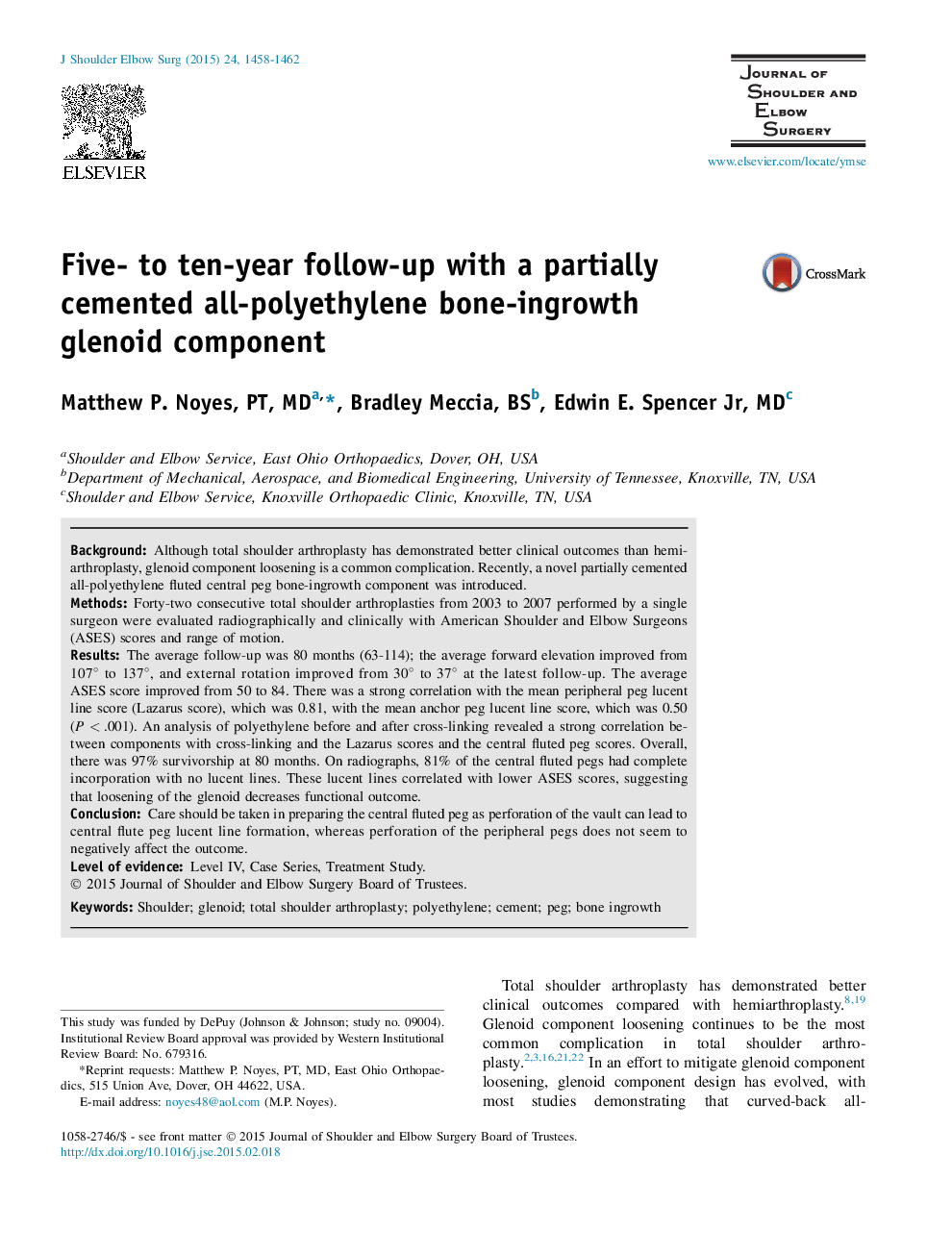| Article ID | Journal | Published Year | Pages | File Type |
|---|---|---|---|---|
| 4073480 | Journal of Shoulder and Elbow Surgery | 2015 | 5 Pages |
BackgroundAlthough total shoulder arthroplasty has demonstrated better clinical outcomes than hemiarthroplasty, glenoid component loosening is a common complication. Recently, a novel partially cemented all-polyethylene fluted central peg bone-ingrowth component was introduced.MethodsForty-two consecutive total shoulder arthroplasties from 2003 to 2007 performed by a single surgeon were evaluated radiographically and clinically with American Shoulder and Elbow Surgeons (ASES) scores and range of motion.ResultsThe average follow-up was 80 months (63-114); the average forward elevation improved from 107° to 137°, and external rotation improved from 30° to 37° at the latest follow-up. The average ASES score improved from 50 to 84. There was a strong correlation with the mean peripheral peg lucent line score (Lazarus score), which was 0.81, with the mean anchor peg lucent line score, which was 0.50 (P < .001). An analysis of polyethylene before and after cross-linking revealed a strong correlation between components with cross-linking and the Lazarus scores and the central fluted peg scores. Overall, there was 97% survivorship at 80 months. On radiographs, 81% of the central fluted pegs had complete incorporation with no lucent lines. These lucent lines correlated with lower ASES scores, suggesting that loosening of the glenoid decreases functional outcome.ConclusionCare should be taken in preparing the central fluted peg as perforation of the vault can lead to central flute peg lucent line formation, whereas perforation of the peripheral pegs does not seem to negatively affect the outcome.
